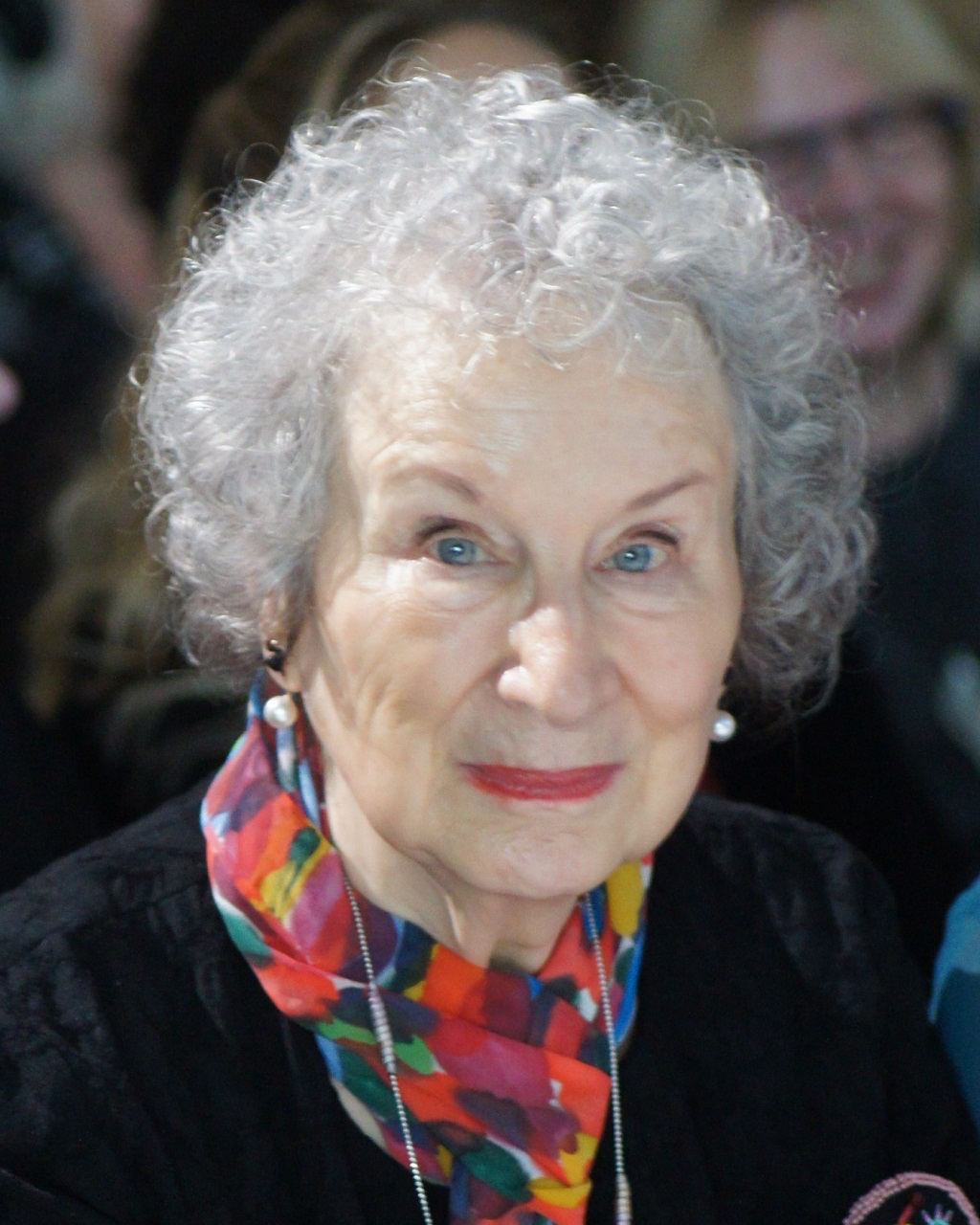Margaret Atwood is a masterful storyteller, whose work serves not just to entertain but to challenge and provoke. Her stories delve deep into the darker aspects of human nature and societal issues, holding up a mirror to the things we might prefer to overlook. Through her vivid storytelling and sharp insights, Margaret Atwood compels us to examine the roles we play in shaping our world. In this article, we dive into the themes and ideas that distinguish her as a pivotal figure in literature.

Consider The Handmaid’s Tale. This novel isn’t merely a dystopian tale about a totalitarian regime; it’s a chilling reflection of our potential future if we let fear dominate our humanity. In today’s politically charged atmosphere, Atwood’s portrayal of Gilead strikes a nerve, feeling less like fiction and more like a cautionary tale. She doesn’t just imagine possible futures; she warns against them, urging us to protect our freedoms with vigilance.
Margaret Atwood’s Beginnings
Margaret Atwood was born in 1939 in Ottawa, Canada. Her early years were split between city life in Toronto and the natural wilderness of northern Quebec. Her childhood in these diverse environments fueled her deep appreciation for nature, a recurring theme in her later works. From a young age, Atwood was a voracious reader and soon began crafting her own stories. This early dedication to writing set the stage for a prolific career that would establish her as a cornerstone of contemporary literature.
A Canadian Voice with Global Resonance
Atwood’s narratives are deeply infused with Canadian landscapes and sensibilities—from the oppressive winters depicted in The Handmaid’s Tale to the wild, untamed settings of the MaddAddam trilogy. Though rooted in Canada, known for its politeness and peacekeeping, Atwood’s work transcends these borders, offering sharp critiques of societal issues that resonate globally. Her Canadian backdrop serves as a stark canvas against which the dramas of her dystopias unfold, highlighting the contrasts between stability and chaos.
Central Themes: Environmentalism and Feminism
Environmentalism and feminism are pillars of Margaret Atwood’s writing. Her speculative fiction often depicts the dire consequences of ecological neglect and technological overreach, particularly in the MaddAddam trilogy. These novels paint a bleak future for Earth, devastated by genetic tinkering and environmental disregard, yet they are rooted in the environmental activism Atwood has long supported.
Feminism is also integral to her work. Atwood’s female characters are richly drawn, navigating oppressive worlds that try to silence them. However, Atwood avoids offering simplistic solutions or portraying her heroines as flawless. Instead, she explores the complexities of female experience, urging readers to consider how society molds and misrepresents women.
Style and Craft of Margaret Atwood
Reading Margaret Atwood is like exploring a map to the hidden parts of our psyche. She has a unique ability to tap into the zeitgeist, reflecting our deepest fears and aspirations in ways that feel both personal and universal. Her prose is clear and compelling, making complex issues approachable and thought-provoking.
As we face today’s challenges and tomorrow’s uncertainties, Margaret Atwood’s literary contributions continue to guide, inspire, and provoke action. Her works are not just to be read; they are to be contemplated, debated, and acted upon, reminding us of the transformative power of literature to inspire change and provoke thought.
Meanwhile, at Dreamers…
Editor’s Note: Issues 21 and 22

We’re pleased to announce the simultaneous release of Dreamers Magazine Issues 21 and 22.These two issues were shaped during very different moments…
Results of the 2025 Dreamers Flash Contest

Congratulations to the winners of the 2025 Dreamers Flash Fiction and Nonfiction Contest!